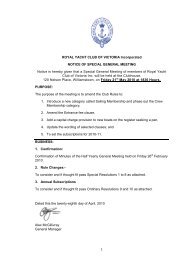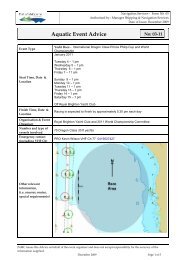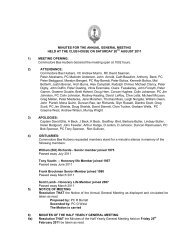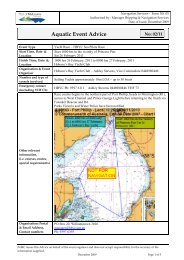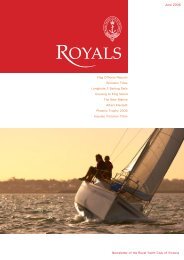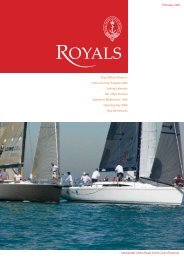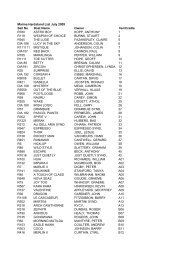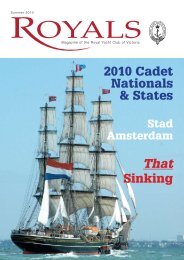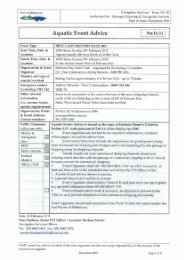Race Signals
Race Signals
Race Signals
You also want an ePaper? Increase the reach of your titles
YUMPU automatically turns print PDFs into web optimized ePapers that Google loves.
Where does the Code of <strong>Signals</strong> come from?<br />
The first public commercial code (there were earlier private semi-commercial codes, as<br />
used for instance by the East India Company) was the "Code of <strong>Signals</strong> for the Merchant<br />
Service". This was produced in 1817 by Captain Fredrick Marryat, R.N. as the result of<br />
problems experienced by ships of the Royal Navy trying to communicate with merchant<br />
ships in convoy. It was a numeric code for British ships only, based upon the "Signal Book<br />
for Ships of War", which had been introduced for all ships in the Royal Navy in 1799. It<br />
was modified with words more appropriate for commercial use.<br />
Ships of other countries began using it, and in 1854, when the 12th edition was<br />
published, it was re-titled, "The Universal Code of <strong>Signals</strong>".<br />
In 1855 the British "Board of Trade" decided that maritime signals needed to be<br />
regulated, and authorised the publication in 1857, of the "Commercial Code of <strong>Signals</strong>".<br />
This was an alphabetical code and a considerable improvement on Marryat's code.<br />
It was re-named the "International Code" in about 1870, and revised in 1901 and 1934.<br />
There was another revision to the Code in 1969 but mainly to sections dealing with<br />
electronic communication.



